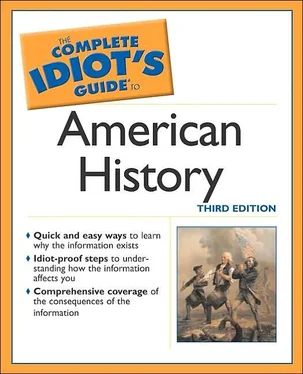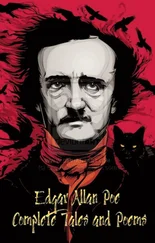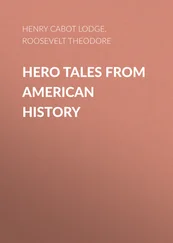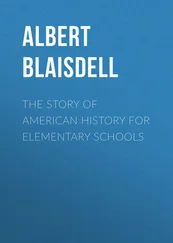In 1732, James Edward Oglethorpe, whose character combined military discipline (he was a general) with a passion for philanthropy, organized a group of 19 wealthy and progressive individuals into a corporation that secured a royal charter to colonize Georgia as the southernmost of Britain’s North American colonies. Oglethorpe’s bold plan was to create a colony as a haven for various Protestant dissenters, but, even more importantly, for the vast and ever-growing class of insolvent debtors who languished in British prisons and also for persons convicted of certain criminal offenses. Oglethorpe reasoned that the colony would give the debtors a fresh start and would reform and rehabilitate the criminals.
Selflessly, Oglethorpe and the other philanthropists agreed to act as trustees of the colony without taking profits for a period of 21 years. To promote a utopian way of life, Oglethorpe prohibited the sale of rum and outlawed slavery in the colony. He also set regulations limiting the size of individual land holdings in an effort to create equality. The first colonists who arrived with Oglethorpe in 1733 were placed on 55-acre farms, which they were forbidden to sell or transfer. But this arrangement, key to the project, was quickly abandoned. To begin with, few of the original 100 colonists were debtors or sufferers of religious persecution or even criminals ripe for rehabilitation. They were speculators looking for opportunity. They soon found ways of circumventing the 55-acre limit to land holding, and once large plantations were established, slavery followed. Georgia was now no different from England’s other southern colonies.
The introduction of slaves into Georgia was the hardest blow to Oglethorpe’s dream, and he returned to England, disgusted with the entire enterprise. Like most other even modestly enlightened individuals, Oglethorpe regarded slavery as evil. Yet it persisted—even in a would-be utopia—and would persist until it tore a nation apart. just as Georgia was a latecomer into the British colonial fold, so it had adopted slavery late in the scheme of things. In 1619, just 12 years after Jamestown got its shaky start, Dutch traders imported African slaves at the behest of the Virginia tobacco farmers. The first 20 or so were landed at Jamestown and were not racially discriminated against, but were classed with white indentured servants brought from England under work contracts. Indeed, many years passed before African slaves were brought to the colonies in large numbers. At first, they were purchased primarily to replace indentured servants who had either escaped or had served out the term of their indentures.
As the plantations of the southern colonies, Virginia, the Carolinas, and Georgia, expanded, demand for slavery grew, as did commerce in slaves. The so-called “triangle trade” developed: Ships leaving England with trade goods landed on the African west coast, traded the merchandise for African slaves, transported this “cargo” via the “Middle Passage.” to the West Indies or the mainland English colonies, where the slaves were exchanged for the very agricultural products—sugar, tobacco, and rice—slave labor produced. The final leg of the triangle was back to England, laden with New World produce. Nor were the northern colonies untouched by the “peculiar institution” of slavery. Although a later generation of New Englanders would pride themselves on being fierce abolitionists, fighters for the freedom of the slaves, their forefathers had profited from the trade. New England ports became a regular stop for vessels about to return to Old England. The sugar and molasses acquired at southern ports was often unloaded here in order to manufacture rum, an important New England export.
The Least You Need to Know
The Pilgrims were Puritans who left England, settling first in Holland and then in New England (at Plymouth) in 1620. Separatists were somewhat less radical Puritans who settled there (at Massachusetts Bay) beginning in 1630.
The other major English colonies were also established as havens for freedom of worship; Georgia was meant to be a utopia.
Intolerance among the Puritans and slavery in the South marred the colonies’ ideal of liberty.
In the fall of 1621, the Pilgrims invited their Native American benefactors to a feast in celebration of the first harvest, in which Indian aid had been so instrumental. The event was the first Thanksgiving (unless you count the collective prayer of thanksgiving offered on December 4, 1619, by members of the Berkeley plantation near present-day Charles City, Virginia). Our first president, George Washington, proclaimed the first national Thanksgiving Day, on November 26, 1789, but it wasn’t until 1863 that President Abraham Lincoln made Thanksgiving an annual holiday to be commemorated on the last Thursday in November. During 1939-41, by proclamation of President Franklin D. Roosevelt, the day was celebrated on the third Thursday in November, but then was returned by act of Congress to the date set by Lincoln.
In February 1692, two daughters of the Reverend Samuel Parris and le of their friends are diagnosed by a Salem, Massachusetts, physician as victims of witchcraft. Under questioning, the girls accuse certain women of being witches. The town magistrates proceed against the accused on February 29 not of the year, accusations multiply: 140 are accused, 107 of them women. The royal governor of Massachusetts, Sir William Phips, establishes a special court to try more than 70 of the cases. Of 26 individuals convicted, 19 are executed.
The Salem witchcraft epidemic, though extreme, was hardly unique. Witches had been tried before 1692 in Massachusetts as well as Connecticut and, even more frequently, throughout Europe. Who stood accused in all of these places? “Witches” were usually poor, elderly women (sometimes men) who quarreled with their neighbors and were generally disruptive, disagreeable social misfits.
Pennsylvania , which means “Penn’s Woods,” was named by King Charles II not after the colony’s founder and proprietor, but in honor of Penn’s father, also named William, a great British admiral.
They Could’ve Been Contenders
(1608-1680s)
In This Chapter
Champlain founds Quebec
Joliet and Marquette discover Mississippi and claim “Louisiana”
The Dutch West India Company creates New Netherland
New Sweden
The English seize New Netherland and rename it New York
Compared to the Spanish, the English got off to a slow start in the New World, but they soon became one of the two principal forces in the Americas. The other was France, which directed its main efforts at settlement along the St. Lawrence River in present-day Canada and in the West Indies. Although “black robes”—Catholic priests—came in the wake of French exploration and set up missions to the Indians, religion was never as strong a component of settlement as it was for the Spanish, nor so compelling a motive for settlement as it was for the English. The fact was that the ambitious Cardinal Richelieu (1585-1642), who, in effect, ruled France as prime minister under the weak-willed Louis XIII, needed money to finance his campaign to make France the dominant power in Europe. And the New World offered opportunity for profit.
As a boy growing up in France, Samuel de Champlain (ca. 1570-1635) showed a real flair for drawing. He especially liked to design maps—inspired in large part by the tales of adventure his naval captain father brought home. Champlain followed in his father’s footsteps and was commissioned by the French government no fewer than a dozen times between 1603 and 1633 to probe the waters of North America and also explore inland. As with so many other explorers at this time, Champlain’s primary objective was to find a Northwest Passage through to Asia, but he also worked to promote trade in furs and other commodities. When Richelieu became convinced that money was to be made from North America, even if a Northwest Passage were never found, he also authorized Champlain to establish colonies and (for Richelieu was a cardinal of the Roman Catholic Church, after all) to promote Christianity.
Читать дальше












